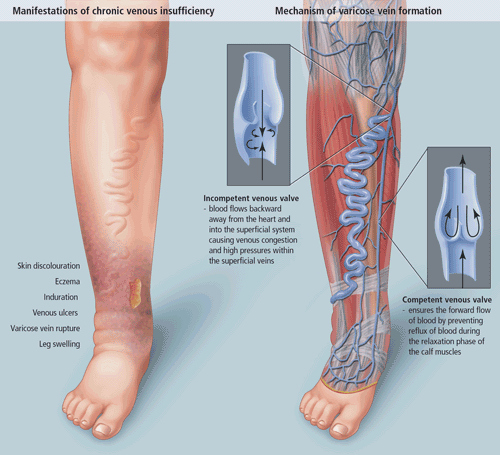Jerry Chen, MD, FRCSC
Assistant Professor,
Vancouver General Hospital,
University of British Columbia,
Vancouver, BC.
Introduction
Varicose veins are a common condition involving the lower extremity superficial venous system. It is estimated that 10 to 20% of the population has varicose veins with the incidence being higher in women. This is thought to be due to the effects of progesterone, which inhibits smooth muscle contraction and allows dilatation of the subcutaneous veins. Men are not immune to this condition, however, constituting approximately 30% of the patients. In the majority of patients, these veins are benign and do not warrant therapy. Treatment is required for varicose veins only when they cause symptoms or when complications arise.
Occasionally, varicose veins may be complicated by manifestations of chronic venous insufficiency such as leg swelling, skin discolouration, eczema, induration, venous ulcers and varicose vein rupture. Although varicose vein rupture and bleeding is an uncommon manifestation of varicose veins, massive bleeding and even fatal cases have been reported.

Pathophysiology
To understand the mechanism of varicose vein formation and venous rupture, one must first understand the venous physiology of the leg.

